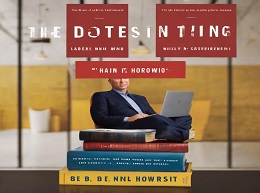The Innovator's Dilemma

In the fast-paced world of business, Clayton M. Christensen's "The Innovator's Dilemma" serves as a guiding light for companies grappling with disruptive innovation. This groundbreaking book explores the challenges faced by established firms and offers strategies to embrace change and stay ahead of the curve. Join us as we delve into the core insights of "The Innovator's Dilemma," enriched with compelling examples and actionable advice for navigating disruption.
Understanding the Innovator's Dilemma
The Paradox of Success
Christensen introduces the concept of the innovator's dilemma—a paradox where successful companies fail to innovate and adapt, ultimately leading to their downfall. Established firms often prioritize sustaining innovations to meet existing customer needs, neglecting disruptive innovations that cater to emerging markets or new customer segments.
Disruptive Innovation vs. Sustaining Innovation
Christensen distinguishes between disruptive innovation, which creates new markets or value networks, and sustaining innovation, which improves existing products or services for established customers. The innovator's dilemma arises when companies focus excessively on sustaining innovations, overlooking the potential of disruptive technologies to reshape industries.
The Dynamics of Disruption
The Technology Adoption Lifecycle
Christensen explores how disruptive innovations follow a trajectory within the technology adoption lifecycle. They initially target niche markets or underserved customers, gradually gaining momentum and eventually displacing established players. This lifecycle poses a strategic challenge for incumbents, who must navigate the transition from established markets to emerging ones.
The Death of Great Companies
"The Innovator's Dilemma" chronicles the downfall of once-great companies that fell victim to disruptive innovation. Christensen examines iconic examples such as Kodak, which failed to adapt to the shift from film to digital photography, and Nokia, which missed the smartphone revolution, illustrating the perils of complacency in the face of disruptive change.
Strategies for Navigating Disruption
Creating a Culture of Innovation
To overcome the innovator's dilemma, companies must foster a culture that embraces experimentation and risk-taking. Christensen advocates for allocating resources to explore disruptive opportunities, even if they initially appear less lucrative than sustaining innovations.
Establishing Separate Business Units
Christensen suggests creating separate business units or spin-offs to pursue disruptive innovations independently from the core business. This allows companies to allocate resources and talent effectively, minimizing the risk of disruptive projects being stifled by existing processes and priorities.
Real-World Examples of Disruptive Innovation
Netflix vs. Blockbuster
The rise of Netflix and the fall of Blockbuster provide a compelling example of disruptive innovation in action. While Blockbuster focused on sustaining innovations such as store expansions and late fees, Netflix embraced disruptive technology, offering DVD rentals by mail and later transitioning to online streaming.
Tesla's Disruption of the Automotive Industry
Tesla's approach to electric vehicles illustrates the power of disruptive innovation to reshape traditional industries. By prioritizing battery technology and software integration, Tesla challenged the status quo of the automotive industry, demonstrating the potential of electric vehicles to disrupt the market.
Overcoming Challenges in Embracing Disruption
Balancing Short-Term and Long-Term Goals
One of the key challenges in navigating disruption is balancing short-term financial performance with long-term innovation goals. Companies must resist the temptation to prioritize immediate profits over investments in disruptive technologies that may not yield immediate returns but are crucial for future competitiveness.
Managing Organizational Resistance
Resistance to change is a common barrier to embracing disruptive innovation. Companies must address organizational inertia and foster a mindset that values adaptability and continuous learning. Leadership plays a crucial role in championing innovation and overcoming resistance within the organization.
Implementing "The Innovator's Dilemma" Strategies
Investing in R&D
Allocate resources to research and development initiatives focused on disruptive technologies and emerging markets.
Encouraging Entrepreneurial Spirit
Empower employees to pursue entrepreneurial initiatives and experiment with new ideas outside of traditional business units.
Fostering Collaboration and Openness
Create cross-functional teams and foster collaboration between different departments to facilitate the exchange of ideas and drive innovation.
Conclusion: Embracing Change in a Dynamic World
"The Innovator's Dilemma" by Clayton M. Christensen is a call to action for companies to embrace change and embrace disruption as an opportunity rather than a threat. By understanding the dynamics of disruptive innovation and adopting strategies to navigate it effectively, companies can position themselves for long-term success in an ever-changing business landscape.
As we navigate the complexities of disruption, let "The Innovator's Dilemma" be our guide—a roadmap to embrace change, foster innovation, and thrive in a dynamic world.
Ready to navigate disruption and drive innovation? Dive into 'The Innovator's Dilemma' and unlock the secrets of staying ahead in a changing market.








